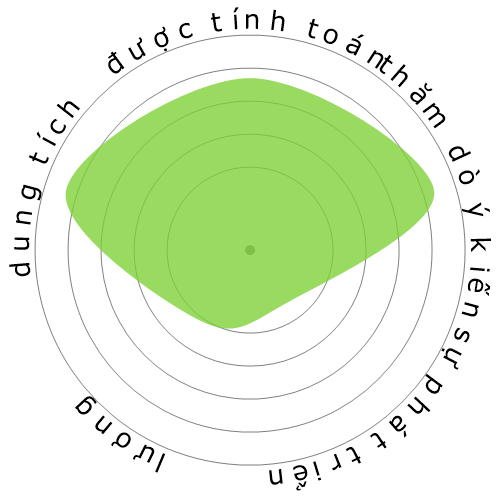Y tá hành nghề có giấy phép và Y tá kỹ thuật có giấy phép




Người khác cũng đã xem
Rủi ro tự động hóa đã được tính toán
Rủi ro thấp (21-40%): Các công việc ở mức độ này có rủi ro tự động hóa hạn chế, vì chúng đòi hỏi sự kết hợp giữa kỹ năng kỹ thuật và kỹ năng tập trung vào con người.
Thêm thông tin về điểm số này, và cách tính nó có sẵn ở đây.
Cuộc thăm dò ý kiến của người dùng
Khách truy cập của chúng tôi đã bầu chọn rằng có khả năng thấp công việc này sẽ được tự động hóa. Sự đánh giá này được hỗ trợ thêm bởi mức độ rủi ro tự động hóa đã được tính toán, ước lượng có 24% cơ hội cho việc tự động hóa.
Bạn nghĩ rủi ro của việc tự động hóa là gì?
Khả năng nào mà Y tá hành nghề có giấy phép và Y tá kỹ thuật có giấy phép sẽ bị thay thế bởi robot hoặc trí tuệ nhân tạo trong 20 năm tới?
Sự phát triển
Số lượng vị trí làm việc 'Licensed Practical and Licensed Vocational Nurses' dự kiến sẽ tăng 2,6% vào năm 2033
Tổng số việc làm, và dự kiến số vị trí tuyển dụng
Dự báo cập nhật sẽ được công bố vào 09-2025.
Lương
Tại 2023, mức lương hàng năm trung bình cho 'Licensed Practical and Licensed Vocational Nurses' là 59.730 $, hoặc 28 $ mỗi giờ
'Licensed Practical and Licensed Vocational Nurses' đã được trả mức lương cao hơn 24,3% so với mức lương trung bình toàn quốc, đứng ở mức 48.060 $
Lương theo thời gian
Dung tích
Tính đến 2023, có 630.250 người được tuyển dụng làm 'Licensed Practical and Licensed Vocational Nurses' tại Hoa Kỳ.
Điều này đại diện cho khoảng 0,42% lực lượng lao động có việc làm trên toàn quốc
Nói cách khác, khoảng 1 trong 240 người được tuyển dụng làm 'Licensed Practical and Licensed Vocational Nurses'.
Mô tả công việc
Chăm sóc cho bệnh nhân bị ốm, bị thương hoặc đang hồi phục, hoặc những người khuyết tật tại bệnh viện, nhà dưỡng lão, phòng khám, nhà riêng, nhà cộng đồng và các cơ sở tương tự. Có thể làm việc dưới sự giám sát của một y tá đăng ký. Cần có giấy phép.
SOC Code: 29-2061.00


Bình luận
As an example, take the humanised skill of empathy. Empathy is the emotional skill to understand and share the feelings of another person. This shared emotional connection is something many, if not all, patients crave and desire. Empathy is something that AI cannot replicate well. In order for empathy to occur between two individuals, both individuals must be capable of emotions. Humans are capable of emotions, but AI robots are not. Emotions are biological, chemical, and mental reactions to certain stimuli. These reactions are uniquely inherent to organic living biological beings. An AI robot is not an organic living being, and thus cannot produce emotions. The best an AI can do is be programmed in a way to say certain things when a patient exhibits particular facial responses or verbal/tonal nuances. However, there is more to empathy than just being responsive. There exists a shared feeling that a human can only feel with another human, or another animal, especially when one of those humans is in a medically ill or injurious state.
Critical thinking serves as another example of a humanised skill that AI will find difficult to replicate. Critical thinking is the intellectual act of considering certain concepts, and constructing a charitable and objective take on said concepts through abstract reasoning or empirical evidence. To further this, the more unique and nuanced those concepts are, the more difficult it will be to critically think about said concepts. In the healthcare settings that LVNs find themselves in, there exists many unique concepts, or in this case, situations. I will illuminate one and that would be the case of patients with severe dementia. Patients with this mental condition may showcase behaviour that includes, but not limited to, loud screaming, random crying and potential desires for killing. What to do with these kind of patients is something LVNs face on a daily basis. Should the LVN just ignore the patient? Doing so may endanger the patient to him or herself, or worse, endanger other patients situated in the same room. Ignoring patients is also considered abuse in healthcare settings. On the other hand, ignoring the patient may allow the LVN to give care to other patients with much more debilitating conditions in the meantime, and thus allowing the LVN efficient time management. The LVN can also attend to that patient first, but only to administer medication that will calm him down, and make the LVN’s work less difficult. This may prove detrimental, if a family member of another patient asked the LVN to administer medicine to him first, because he missed a dose earlier in the day. With all this in mind, one can see how as an LVN there are many factors that they have to consider when making a reasonable decision, such as proper ethics, personal feelings, logical order of work, and so on. The LVN must be able to evaluate these factors and utilise his intellectual capacity for reason to support making the right decision. An AI’s intellectual capacity is much more rigid than a human’s mind. An AI robot cannot improvise at any given moment in the same fashion as a human. Unique situations, such as the aforementioned dementia case, requires a mind being able to asses many nuanced factors unique to the situation. Unfortunately, AI is just not capable yet of such critical thinking.
Để lại phản hồi về nghề nghiệp này